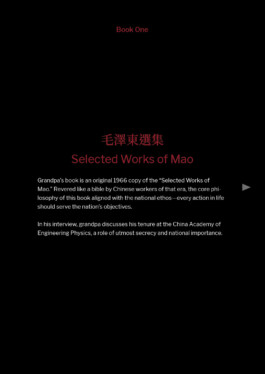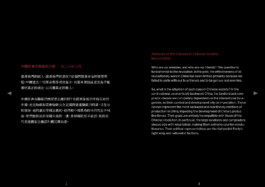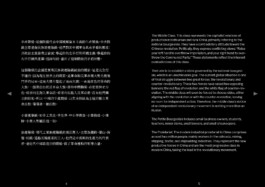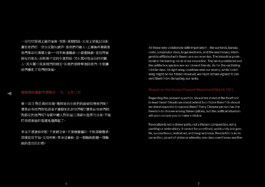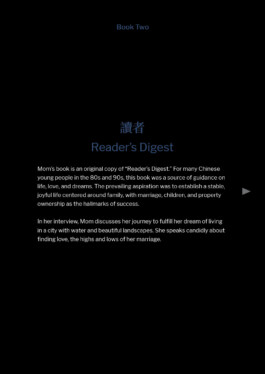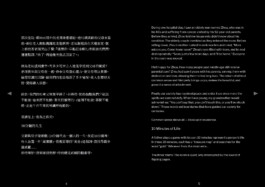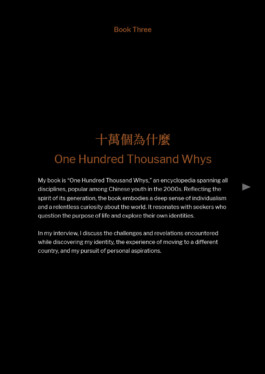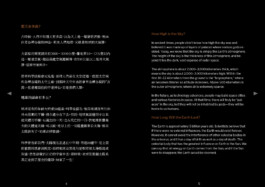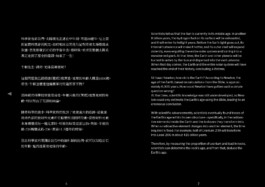GENERATION OF BOOKS
A Deepfake Book Reading Performance & Installation
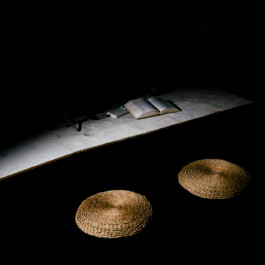
The historical divide compresses what would be 4 centuries of European upheaval into a mere 40 years for the Chinese, cleaving our generation into disparate eras.
We grapple with imbalances—geographical, economic, personal—each breeding a disquiet in our minds, until even our dreams falter and lose their equilibrium. We live amidst vast disparities, This is our life, living in the enormous gaps between reality and history; one could argue we are all ill, or conversely, that we are wholly sound, for we live perpetually suspended between two extremes.
-------YuHua 余华, "We dwell in the shadows of colossal disparities" "我们生活在巨大的差距里“
DIRECTOR
DESIGN DIRECTOR
INTERACTION ARTIST
COMPOSER
FABRICATION
PHOTOGRAPHY
SUPPORTED BY
SPECIAL THANKS
INA CHEN
ARSENIOS ZACHARIADIS
AMBER YUHENG ZHU
SANTIAGO AMÉZQUITA
QWENTYZ
ZACHARY SERRANO
YUDO KURITA
GEMA GALIANA
CULTURE HUB
STACY DAWSON STEARNS
CAMILLE WEINS
CALVIN SIN

Generation of Books is a (Deepfake) book reading performance and physical installation series.
It explores the profound societal and psychological upheavals in China over recent decades — transformations so sweeping that they mirror four centuries of European evolution, as poetically noted by author Yu Hua.
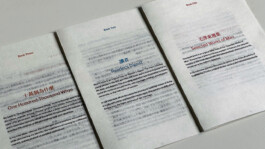
Through the lens of three books, read by three successive generations within one family, Generation of Books captures the immense scale of change in China and the deep rifts it carves across time, space, and ideology.
It reflects not only on dramatic shifts in landscape and belief systems, but also on the personal and collective psyches caught between historical remnants and futuristic aspirations.

Amid these ideological rifts, I find myself engaged in an intergenerational conversation. It is the clash of beliefs that silences certain topics at the dinner table, yet it is the quiet, enduring power of love that continues to bring the family together around it.

01 // 3 BOOKS, 3 ERAS, 1 FAMILY
I used to think the whole “Mom, stop telling me what to do, our generation is different” dynamic was universal. Just something that came with the gap in age, a natural rhythm between parents and children. I never really stopped to peel back the layers and ask: what actually makes our generations so different? What are the forces behind that distance?
It wasn’t until I sat down for a few very long, uninterrupted conversations with my grandparents and my mother that I began to understand. Stories I had grown up hearing in passing, stories that once felt ordinary or repetitive, suddenly revealed a deeper weight. They weren’t just personal anecdotes. They were records of entire eras, each shaped by massive cultural, political, and ideological shifts.
Those conversations planted the seed for this project. What began as a search for understanding became a meditation on how history lives in books, language, and memory — and how, even within one family, the world can change in unimaginable ways.
FIRST GENERATION // GRANDPA
A FORMER CHINESE NUCLEAR RESEARCH FACILITY WORKER
Grandpa's book is an original 1966 copy of the "Selected Works of Mao" "Selected Works of Mao." Revered like a bible by Chinese workers of that era, the core philosophy of this book aligned with the national ethos—every action in life should serve the nation's objectives.
In his interview, Grandpa discusses his tenure at the China Academy Of Engineering Physics, a role of utmost secrecy and national importance.
SECOND GENERATION // MOM
A MEDICAL STUDENT CROSSED CHINA TO BUILD A LIFE AND FAMILY
Mom's book is an original copy of "Reader's Digest." For many Chinese young people in the 80s and 90s, this book was a source of guidance on life, love, and dreams. The prevailing aspiration was to establish a stable, joyful life centered around family, with marriage, children, and property ownership as the hallmarks of success.
In her interview, Mom discusses her journey to fulfill her dream of living in a city with water and beautiful landscapes. She speaks candidly about finding love, the highs and lows of her marriage.
THIRD GENERATION // ME
AN ARTIST NAVIGATING IDENTITY IN DIASPORA
My book is “One Hundred Thousand Whys," an encyclopedia that spans all disciplines. Reflecting the spirit of my generation, it caters to our deep individualism. We are seekers, constantly questioning the purpose of life and exploring our own identities.
In my interview, I discuss the challenges and revelations encountered while discovering my identity, the experience of moving to a different country, and my pursuit of personal aspirations.
02 // ARCHIVES & OBJECTS
This project includes a wide collection of archival papers and objects I gathered over time. The process of collecting them became unexpectedly intimate. My grandfather and my late grandmother, who passed away in 2024, sat with me as we flipped through these materials together. It was the last time I saw her. What began as an act of documentation became a significant intergenerational exchange, transforming archival preservation into a final, shared moment of remembrance.
A glimpse of gathered archives and materials below.
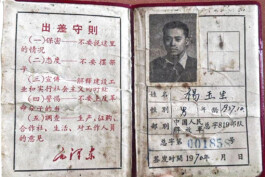
Grandpa's People's Liberation Army ID, 1970

Laborer, 9th Research Institute, Ministry of Machinery, 1974
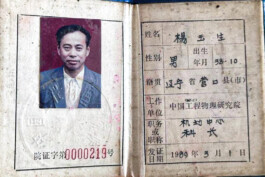
Section Cheif, China Academy of Engineering Physics, 1989

Commemorative medal for China’s 1st Atomic Bomb
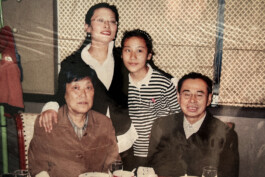
Grandparents, mom and me, 2004
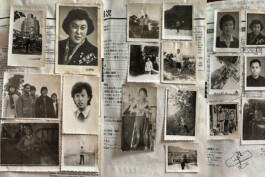
Family almub crafted by Grandpa using old Japanese/Russian textbooks

Grandparent's wedding photo, 1962

Grandpa working
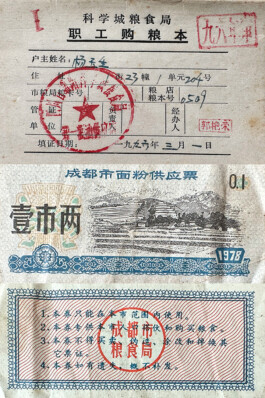
State-issued food and grain coupon

Certificate for China’s 1st Hydrogen Bomb

I started playing Piano since 4

My 8th grade Chinese exam paper, scored 86 out of 100
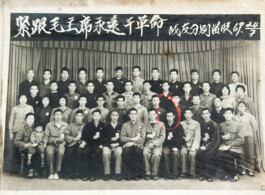
Grandpa with coworkers, 1969
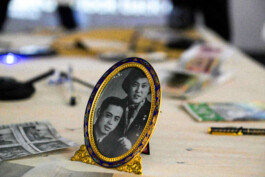

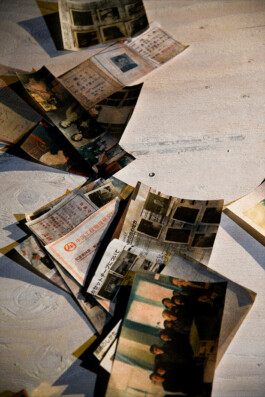
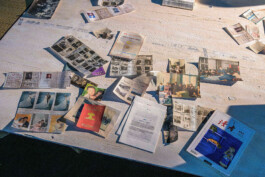

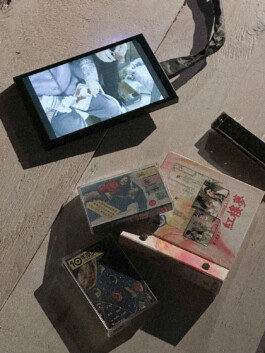
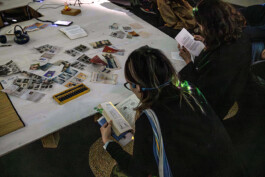
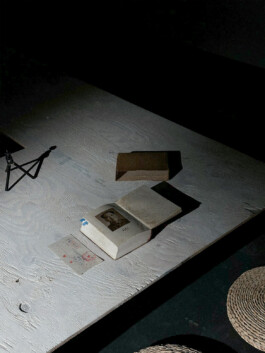
The desire to display these archival materials and invite intimate audience engagement led to the next design challenge: creating the table and installation setup.
03 // INSTALLATION & PLATFORM

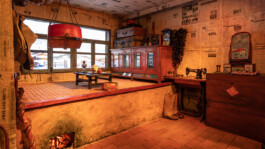
The Kang (炕) is a traditional heated platform found in Northern China, where my grandparents are originally from, before moving across the country to dedicate their lives to China’s nuclear and hydrogen bomb projects. In the bitter cold of the north, the Kang becomes a multifunctional space: coal burns beneath it for warmth, and people eat, sleep, and gather on its surface. It’s a site of intimacy, sharing, and togetherness. It became a major inspiration for the design of our installation table.

Collaborating with architect and designer Arsenios Zachariadis, we set out to create a platform that would hold space for both the archival materials and the book reading performance. The goal was to allow visitors to gather around, flip through the archives, and experience the performance communally.

Design/Render by Arsenios Zachariadis
The final design was an 8-by-8-foot wooden platform, featuring a curved corner and a circular cut-out at its center.
Initially, we envisioned the book reading performance unfolding across three distinct positions: on top of the platform, inside the cut-out hole, and along the edge—each corresponding to a different generation. Archival materials would be arranged around these zones to reflect the era they represented. Though we ultimately simplified this concept during installation due to its complexity, it remains an idea worth revisiting and further developing in future iterations.

Early napkin sketches
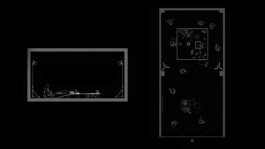
Plan & Section
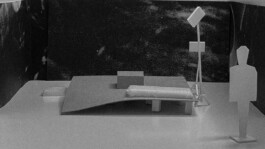
Model v1
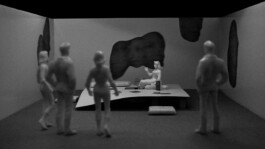
Model v2

Render

Final Platform
04 // PERFORMANCE VISUAL

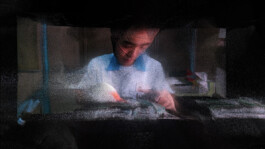
The project invites audiences to engage with the archival objects arranged around the platform, followed by a 25 minutes performance.
The performance consists of three five-minute readings, each drawn from one of the selected books. Between the readings, two-minute visual interludes serve as transitions, each tailored to reflect the ethos of the corresponding book, individual, and era.

1950s work compounds are reconstructed through photogrammetry/3D scans and layered with archival footage from China’s first atomic bomb test. This piece evokes an era shaped by secrecy, sacrifice, and unwavering ideological purpose.
Born in 1938, Yang Yusheng, my grandfather, dedicated his life to the China Academy of Engineering Physics, contributing to the development of China’s first atomic bomb in 1964 and hydrogen bomb in 1967. For his generation, Selected Works of Mao was more than a book — it embodied a guiding principle: that every personal act must serve the nation and the Party.
Reimagining excerpts from Baraka using AI-generated depth maps to spatially manipulate the original footage. It reflects the intensity of China’s modernization from the 1980s to 2000s — an era defined by explosive economic growth, mass migration, factory life, and the overwhelming pace of urbanization.
Born in 1969, Yang Hong, my mother, grew up in a state workers' compound (家属大院) in Sichuan before moving to Suzhou to study medicine, drawn to its canals, waters and poetic landscapes. For her generation, Reader’s Digest offered a worldview shaped by love, family, and domestic success—, deeply intertwined with China’s shifting values and visions of modern life.
This piece reinterprets and extends the final scene of Koyaanisqatsi, where the failed 1962 Atlas-Centaur rocket drifts downward in haunting slow motion. Using live hand-tracking, I choreograph 3D-reconstructed rocket debris, transforming collapse into performance. It becomes a meditation on technological ambition and its fragility, on profound loneliness and helplessness, yet an enduring hope to keep searching for meaning.
Born in 1995 in Suzhou, I migrated to the U.S. and Europe in 2012, seeking purpose, identity, and belonging. For my generation, One Hundred Thousand Whys embodies an insatiable curiosity. A restless urge to understand the world and one’s place within it.
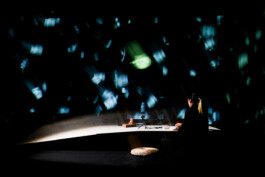
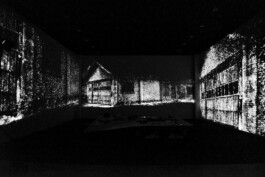

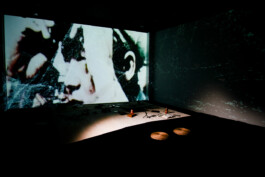
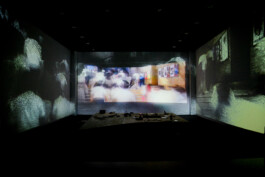
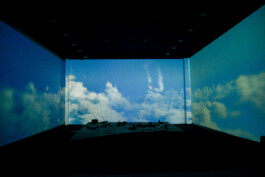

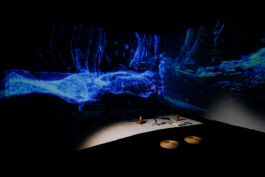
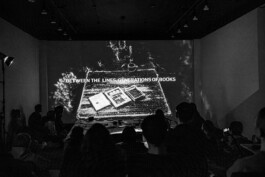
05 // THE USE OF DEEPFAKE

"I see my shadow on you, and yours on me." My mom said this once in passing, but it stayed with me—a quiet truth about how souls can blur at the edges. I wanted to hold onto that feeling during the readings from my mother’s and grandfather’s books.
Working with Amber Zhu, we developed a visual language in TouchDesigner that avoided the literal realism of deepfakes, aiming instead for something more ephemeral. The face drifts slowly across the wall, leaving a soft trail, until it gently merges with my own—projected, overlapping, momentarily becoming one.
Stylized deepfake faces slowly merge with mine over the course of the reading (sped up here)
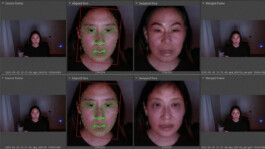
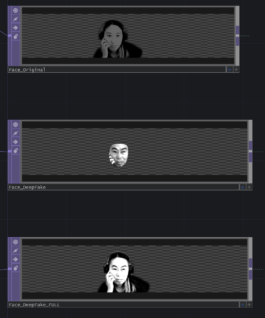
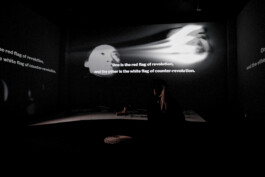

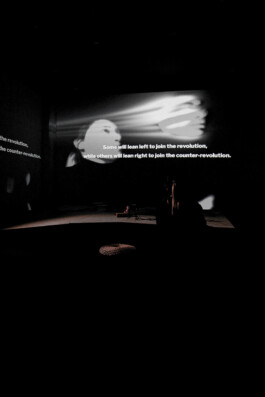
EXTENDED MATERIALS // BOOK EXERPTS
